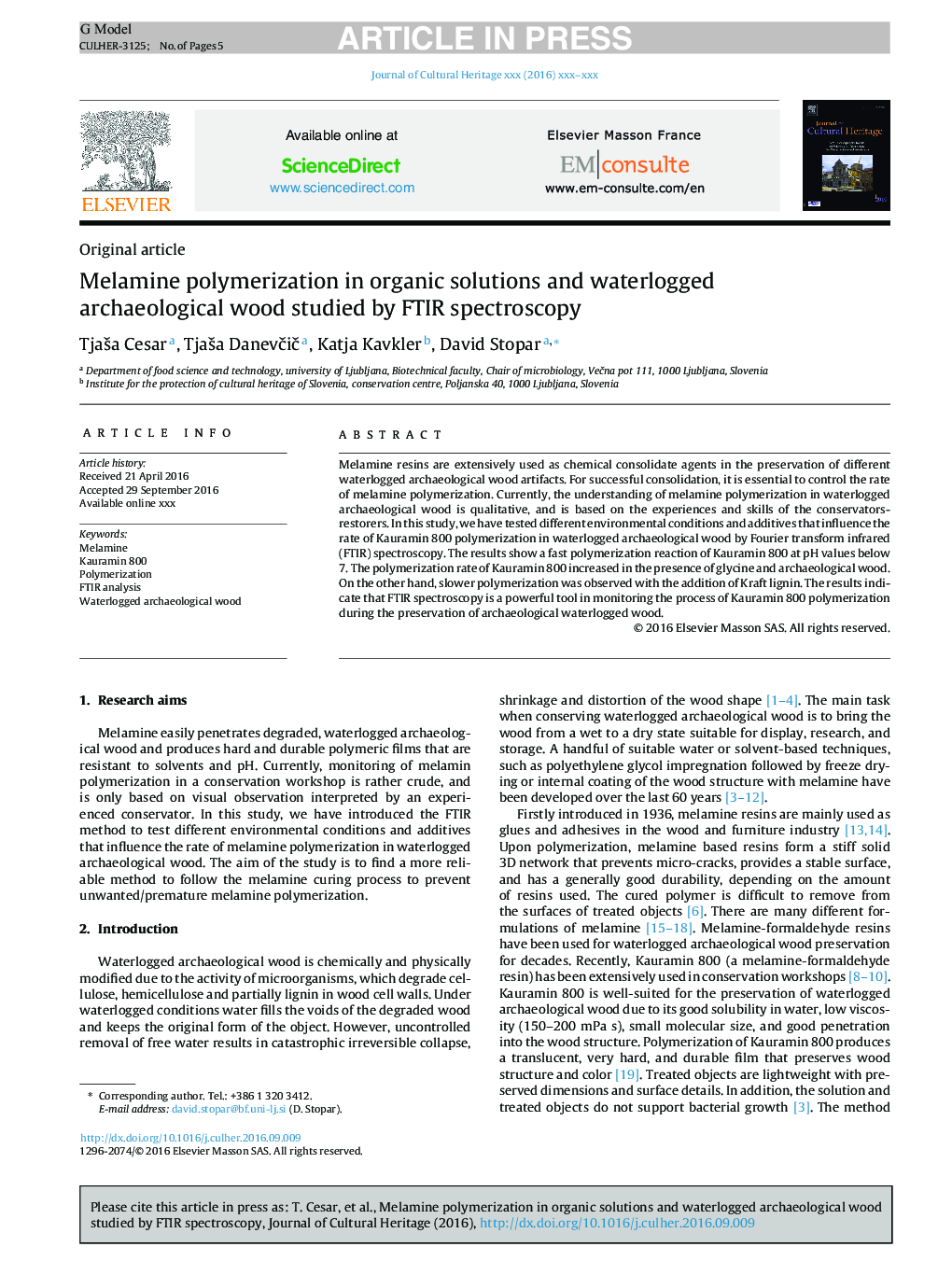| Article ID | Journal | Published Year | Pages | File Type |
|---|---|---|---|---|
| 5112768 | Journal of Cultural Heritage | 2017 | 5 Pages |
Abstract
Melamine resins are extensively used as chemical consolidate agents in the preservation of different waterlogged archaeological wood artifacts. For successful consolidation, it is essential to control the rate of melamine polymerization. Currently, the understanding of melamine polymerization in waterlogged archaeological wood is qualitative, and is based on the experiences and skills of the conservators-restorers. In this study, we have tested different environmental conditions and additives that influence the rate of Kauramin 800 polymerization in waterlogged archaeological wood by Fourier transform infrared (FTIR) spectroscopy. The results show a fast polymerization reaction of Kauramin 800 at pH values below 7. The polymerization rate of Kauramin 800 increased in the presence of glycine and archaeological wood. On the other hand, slower polymerization was observed with the addition of Kraft lignin. The results indicate that FTIR spectroscopy is a powerful tool in monitoring the process of Kauramin 800 polymerization during the preservation of archaeological waterlogged wood.
Related Topics
Physical Sciences and Engineering
Chemistry
Physical and Theoretical Chemistry
Authors
TjaÅ¡a Cesar, TjaÅ¡a DanevÄiÄ, Katja Kavkler, David Stopar,
